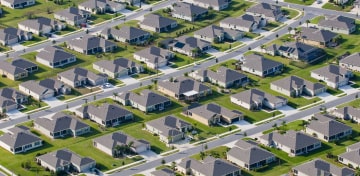

The Problem
North America has lost close to 3 billion birds since the 1970s, almost a third of the entire bird population. It is not just rare or endangered birds that we are losing, our backyard songbirds are disappearing too. The bird die-off is primarily attributed to loss of habitat and the use of pesticides. Our yards are food deserts; filled with unappetising exotic plants and sprayed clean of insects. Our birds have no bugs and berries to eat, no cavities for nesting, and no thickets for protection from predators.
Birds are the messengers for a much larger problem: canaries in coal mines, they are warning us about ecosystem-wide biodiversity collapse.
The Loss of Birds
“A staggering loss that suggests the very fabric of North America’s ecosystem is unraveling.”
— Cornell Lab director John Fitzpatrick and Ornithologist Peter Marra

The bird loss was announced to the world in 2019 in a scientific paper titled “Decline of the North American Avifauna.” No surprise it got noticed. Big surprise: the largest losses are not to birds of fragile forests and wetlands, but to grassland birds. Grasslands are the landscapes that are least protected; the meadows and open spaces that are the first to be developed for human needs; the lands that have become our yards.
Our yards are no longer good bird habitat. They are filled with inedible exotic plants and sprayed with pesticides. The backyard birds we have always taken for granted are slipping away.
The Loss of Habitat
“I believe our biggest issue is the same biggest issue that the whole world is facing, and that’s habitat destruction.”
— Steve Irwin,“The Crocodile Hunter”

Habitat is basic: food, shelter, and water. Mess with any one and the web of life unravels. The size of a habitat is also critical. As our natural habitats become smaller and further apart, the spaces between them, our yards, become more significant.
Food: Birds rely on plants and insects for food. Native plants evolved with birds to provide fruits and seeds at the right times in the right nutritional balance. Native plants provide food for insects too. Around 96 percent of North American terrestrial birds feed their babies insects, so when native plants decline, insects decline, and the birds do too. Insects are declining 8 times faster than birds. Native plants are declining precipitously as well, but there are no statistics as plant research is typically less well funded.
Shelter: Birds need a mixture of plants and settings to safely raise young and avoid predators. Native plants (living and dead), open spaces, thickets and ground covers all play a role for successful nesting and hiding. Our yards are generally scrubbed of these natural elements.
Water: Birds need water to drink and bathe. The ponds, streams and puddles they used to rely on are all filled in, or they are filled with water polluted by landscape chemicals.
The Use of Pesticides
“Swallows have disappeared, bees are dying out because of pesticides that should have been banned long ago—it’s a scandal.”
— Brigitte Bardot

The typical American home garden uses 60 million pounds of pesticide each year, two to four times more chemicals than the same amount of agricultural land.
Pesticides –insecticides, fungicides, herbicides, bactericides and rodenticides– kill pests. In addition to targeted pests, they harm beneficial insects, fungi, plants, bacteria, and animals that happen to eat poisoned rodents. They destroy the soil biome, pollute our water, kill bees, and hurt birds. After Rachel Carson’s heroic defeat of DDT, we did not stop using pesticides; the pesticides got more sophisticated. And so have the pests.
The Problem of Exotic and Invasive Plants
“The loss of a single native plant species can disrupt an intricate web supporting myriad plants and animals….”
— The Native Plant Trust

Plants from far off ecosystems are referred to as “non-native”, “exotic”, or “alien”. Since they didn’t evolve in their new home they can’t provide the same richness of food and shelter as a native plant. Exotics have replaced natives in most home landscapes and since they do contribute to the food web, they can be held responsible for the bird decline. (Tallamy et al.) And, to make matters works, some exotics become invasive, they get out of control and out-compete the locals in natural habitats. Barberry, Miscanthus, Oriental Bittersweet, Buddleia and Callery pears are typical examples of popular and pretty exotics that have escaped our gardens and now present a serious challenge to the habitats that birds rely on for food and shelter.
Climate Change
Landscape practices that include habitat degradation, pesticides, and fossil fuel dependent machinery, like mowers and blowers, all contribute to climate change. The rising temperatures and weather volatility that are starting to be felt, take a harsh toll on plants and birds. As wildlife populations move northward to escape the heat, the mobility of the plants they rely on will necessarily lag behind and cause further shortages in food and shelter.